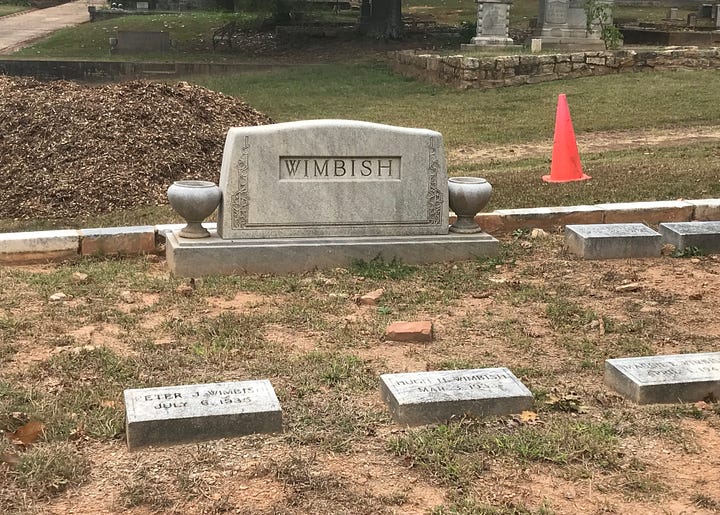One thing I learned in graduate school is that researchers often look for novel ways to capture variables and outcomes in their studies.
As I’ve been researching William Finch and Bill Yopp for this series, one source that I’ve been relying on is old newspapers, and it seems to me that they present an interesting way to look at stratification within a society over time. For example, help wanted ads used to specify the preferred race, sex, nationality, age, marital status, etc. of applicants, a practice that was eventually outlawed.
I’ve been looking at obituaries, which in certain regions and periods of time are categorized by race. Even more subtle than this, though, is the language about race used within death announcements and the life events which are highlighted or obscured based on the decedent’s race.
William Finch passed away in 1911, and his death is documented in both the Atlanta Journal and the Atlanta Constitution, which were separate papers at the time. Both announcements refer to his time in slavery and name his enslaver. They both state that Finch served his enslaver’s sons during the Civil War, although I don’t believe this is true based on what’s presented in this 1955 academic article by Clarence A. Bacote, which suggests Finch and his young family stayed elsewhere during the war. Both announcements mention Finch’s successful tailor shop, but only the Journal piece mentions that Finch was elected to city council (note: after Finch’s term in 1871, there wouldn’t be another Black person elected to a city office in Atlanta until the early 1950s).
What’s most strange to me as a modern reader, though, is how Finch is described in terms of white people’s perception of him or relationship to him. The Constitution article describes him as having a “host of white friends” while the Journal article states that he “stood well among the white people.” I don’t have the expertise or the tools to do this kind of research, but I’d love to know how long this practice of documenting a Black person’s esteem with regards to white people existed and how it might have varied across regions over time.
Unlike looking at the end of racial classifications in help wanted ads, looking at changes in the language within the death announcement seems like it would capture some other type of societal change because while a statement about how a Black person is perceived by white people in their community definitely reinforces segregation, the way this information is presented in Finch’s case suggests it was meant to be a compliment.
Another interesting way to examine this issue would be to compare the language used in death announcements in papers that would have been run by white staff to the announcements run in Black newspapers in the same time period. I wasn’t able make this comparison for William Finch, but I did find death announcements for Captain Christopher Columbus Wimbish Sr., who lived during the same time period as William Finch and who is also buried in the Historic African American section at Oakland Cemetery. I learned first of Wimbish’s sons, Christopher Columbus Jr. and Hugh, both of whom served in World War I.


Captain Christopher Columbus Wimbish Sr. (listed as Columbus C. Wimbish in his death notices) died in 1915, a few years after William Finch. Wimbish’s death announcement in the Atlanta Constitution is similar to Finch’s in that it talks about how he was well regarded by white people in the community in addition to listing his career accomplishments (holding two presidentially appointed positions). An announcement in The Monitor, a Black newspaper out of Omaha, Nebraska, lists Wimbish’s career and political accomplishments without any mention of how he was perceived by white people.
Sunny Side Up Daffodils
This week’s daffodils are ones that I associate with the Wimbish family lot at Oakland since they grow nearby. This first time I saw them, they caught my eye because of how much they looked like a fried egg.






That is really interesting. You can learn so much from things that you wouldn't necessarily think about as references but that is telling!